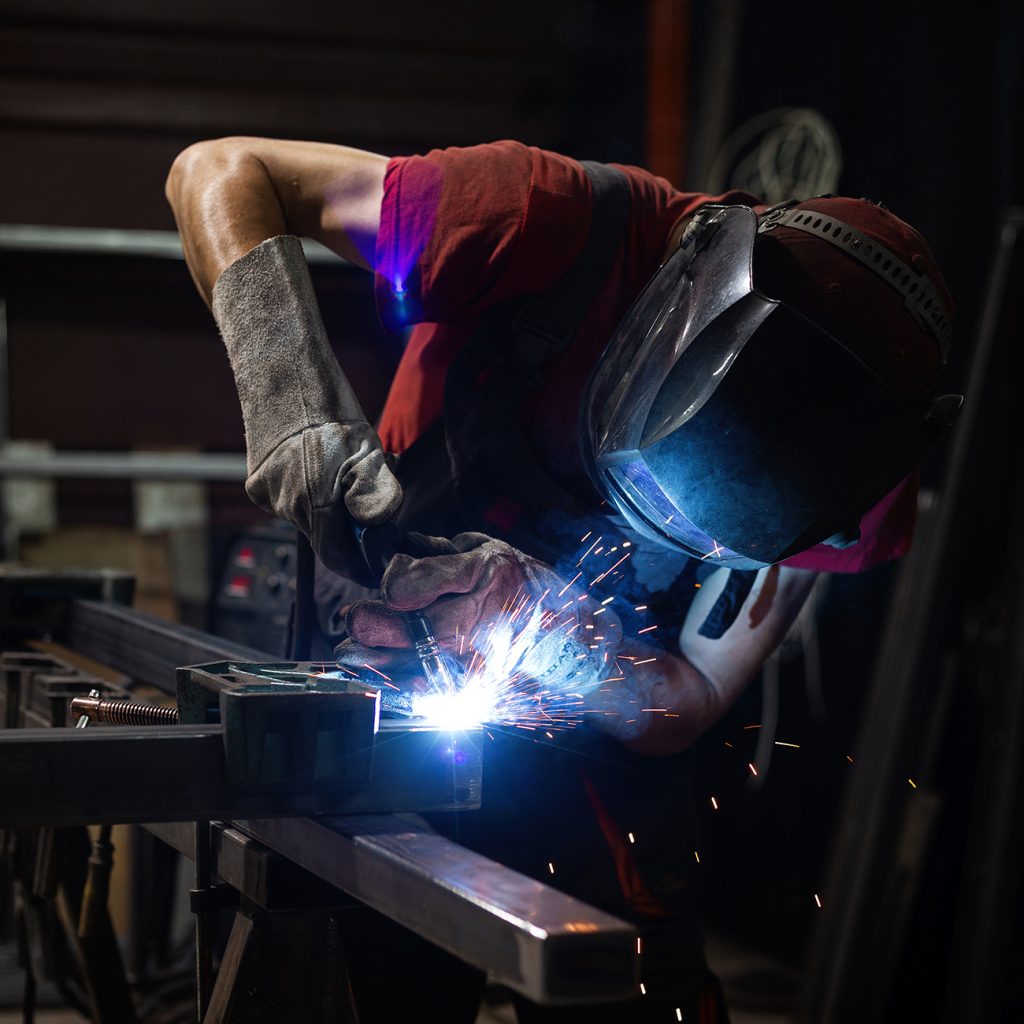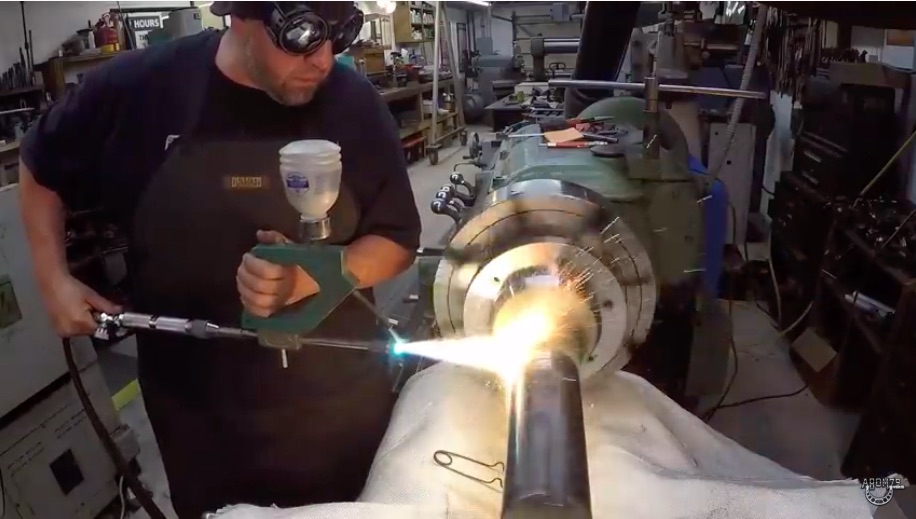Typical Welding Repair Service Issues and Exactly How to Address Them Properly
Welding repair work usually experience a variety of issues that can threaten the honesty of the final product. Typical issues consist of inadequate infiltration, porosity, and misalignment, to name a few. Each issue provides unique difficulties that require certain techniques for resolution. Comprehending these issues is essential for welders intending to enhance their abilities and results. This conversation will explore these usual welding repair service concerns and effective techniques to resolve them.
Inadequate Infiltration
Poor penetration takes place when the weld metal stops working to completely fuse with the base product, resulting in weak joints and possible architectural failings. This concern commonly comes from inadequate heat input, wrong electrode angle, or incorrect welding speed. Welders may encounter inadequate penetration because of a miscalculation of the required criteria for a specific material thickness or kind. Furthermore, contamination on the base product's surface can impede efficient bonding, aggravating the issue. To resolve inadequate infiltration, welders need to guarantee suitable setups on their devices and keep a tidy job surface area. Regular examination of welds is advised to determine any kind of deficiencies early, enabling timely improvements and the prevention of compromised structural honesty in bonded settings up.
Porosity
Porosity is a common flaw in welded joints that materializes as small gas bubbles trapped within the weld metal. This flaw can compromise the stability of the weld, bring about decreased toughness and potential failure under stress and anxiety. Montana Mobile Welding and Repair Fabrication. Porosity typically develops from contamination, dampness, or incorrect welding methods, which permit gases to run away right into the liquified weld swimming pool. To address porosity, welders ought to guarantee proper surface prep work, maintain a tidy functioning setting, and make use of appropriate welding criteria. Additionally, picking the ideal filler material and shielding gas can alleviate gas entrapment. Routine examination and screening of welds can aid recognize porosity early, ensuring prompt rehabilitative activities are taken, consequently maintaining the quality and reliability of the welded structure
Misalignment
Imbalance in welding can emerge from numerous aspects, including incorrect arrangement and thermal growth. Recognizing the origin triggers is vital for efficient resolution. Numerous correction techniques are available to realign components and assure structural honesty.
Root causes of Misalignment
Welding imbalance typically originates from a variety of underlying concerns that can jeopardize structural stability. One main cause is incorrect fit-up of parts before welding, which can result in voids and irregular surfaces. Variations in thermal development throughout the welding procedure can likewise lead to distortion, specifically if the materials being signed up with have different coefficients of growth. In addition, poor securing and fixturing might stop working to hold components firmly in area, bring about activity during welding. Inadequately maintained tools, including welding makers and tools, may introduce inconsistencies in the weld grain, more adding to misalignment. Driver mistake, stemming from insufficient training or experience, can likewise play a significant role in creating misaligned welds.

Improvement Techniques Readily Available
Dealing with imbalance effectively needs a combination of rehabilitative methods customized to the specific problems available. One common method is using jigs or components to hold components in the appropriate setting throughout welding, guaranteeing constant positioning. Furthermore, preheating the products can help in reducing distortion and improve fit-up. For significant misalignment, mechanical realignment strategies, such as utilizing hydraulic jacks or clamps, can be utilized to fix the position prior to welding. Post-weld heat therapy might additionally be needed to soothe stress and anxieties caused by misalignment. Lastly, cautious evaluation and adjustment throughout the setup stage can avoid misalignment problems from becoming significant issues, advertising a smoother welding procedure and improving general architectural honesty.
Distortion
Distortion is a common difficulty in welding that can emerge from different aspects, consisting of unequal heating & cooling. Comprehending the root causes of distortion is important for carrying out efficient prevention methods. Addressing this concern not just enhances structural integrity yet additionally improves the total quality of the weld.
Reasons of Distortion
When based on the intense warmth of welding, materials usually go through changes that can cause distortion. This phenomenon mostly develops from thermal expansion and contraction during the welding procedure. As the weld location warms up, the product broadens; upon cooling, it gets, which can develop internal stresses. In addition, uneven home heating across a work surface can exacerbate these stress and anxieties, resulting in warping or bending. The kind of product additionally plays a significant role; metals with differing thermal conductivity and coefficients of development might respond in different ways, bring about unpredictable distortions. Poor joint style and inadequate fixturing can contribute to misalignment during welding, increasing the likelihood of distortion. Recognizing these causes is vital for effective welding repair and prevention strategies.
Avoidance Techniques
Effective prevention strategies for distortion during welding concentrate on regulating warmth input and making sure correct joint layout. Keeping a constant heat input aids to reduce thermal growth and contraction, which can result in distortion. Making use of methods such as preheating the workpiece can likewise lower the temperature slope, advertising uniform heating. Furthermore, choosing suitable joint designs, such as T-joints or lap joints, can boost security and decrease stress and anxiety concentrations. Carrying out correct fixturing to safeguard the workpieces in location even more help in maintaining placement throughout the welding process. Finally, staggered welding sequences can disperse warmth a lot more evenly, protecting against local distortion. By using these approaches, welders can considerably reduce the chance of distortion and boost the general high quality of their welds.
Cracking
Breaking is a typical welding table issue experienced in welding fixings, frequently arising from numerous variables such as incorrect cooling prices, product choice, or poor joint prep work. The event of splits can substantially endanger the integrity of the weld, bring about prospective failings throughout operation. To address this issue, welders have to initially analyze the origin creates, guaranteeing that products are suitable and appropriately selected for the specific application. Additionally, regulating the air conditioning price throughout the welding process is crucial; fast cooling can cause stress and lead to breaking. Correct joint design and prep work additionally contribute to lessening the threat. Implementing these methods can boost weld quality and sturdiness, eventually minimizing the likelihood of breaking in completed weldments.

Insufficient Blend
A significant flashback arrestor problem in welding repair work is incomplete combination, which takes place when the weld metal does not adequately bond with the base product or previous weld passes - Montana Mobile Welding and Repair Welding. This defect can cause weaknesses in the joint, possibly jeopardizing the stability of the welded structure. Aspects adding to incomplete combination include inadequate warm input, incorrect welding method, and contamination of the surface areas being signed up with. To resolve this concern successfully, welders need to ensure proper pre-weld cleaning and surface area preparation, along with change their welding parameters to accomplish appropriate infiltration and combination. Routine examination throughout the welding procedure can likewise aid recognize insufficient blend early, allowing for timely rehabilitative steps to enhance the overall quality of the weld
Overheating
While welding repairs can boost structural stability, overheating provides a considerable obstacle that can lead to product degradation. Excessive warm during welding can modify the mechanical properties of metals, leading to reduced toughness, increased brittleness, and warping. This sensation is especially important in high-stress applications where architectural integrity is vital. Determining overheating can entail visual examinations for staining or distortion, in addition to keeping track of temperature level throughout the welding process. To alleviate the dangers related to overheating, welders must use appropriate techniques, such as regulating warmth input, changing traveling rate, and making use of suitable filler materials. Additionally, applying pre- and post-weld warm therapies can aid bring back product properties and boost the general high quality of the repair service, ensuring long-lasting efficiency and safety and security.
Regularly Asked Inquiries
What Are the Common Signs of a Welding Issue?

Just How Can I Evaluate My Welds for High quality?
To check welds for high quality, g welding one can make use of aesthetic inspections, ultrasonic screening, and radiographic approaches. Each strategy assures architectural integrity, determines flaws, and validates adherence to specified standards, eventually boosting the integrity of the welded joints.
What Safety and security Safety Measures Should I Take While Welding?
When welding, one need to focus on safety by using proper individual protective equipment, making certain appropriate air flow, securing flammable products away, preserving a tidy workspace, and understanding environments to avoid injuries and crashes.
Can I Repair a Weld Without Remodeling the Entire Joint?
Repairing a weld without redesigning the whole joint is possible, depending upon the damage (Welding). Strategies such as grinding, including filler product, or utilizing a welding process can properly attend to specific imperfections while protecting the surrounding structure
What Equipment Are Vital for Efficient Welding Services?
Important devices for efficient welding repair services consist of a welding maker, cable brush, mill, safety gear, clamps, and filler products. Each tool plays a vital role in making certain high quality and safety and security during the repair service process. Porosity usually develops from contamination, wetness, or inappropriate welding methods, which permit gases to get away right into the molten weld pool. Inadequately maintained devices, consisting of welding devices and tools, might introduce variances in the weld grain, more contributing to misalignment. When subjected to the extreme warm of welding, products commonly go through adjustments that can lead to distortion. Fracturing is a common concern run into in welding repairs, often resulting from various aspects such as inappropriate air conditioning rates, material option, or insufficient joint prep work. A considerable issue in welding fixings is insufficient blend, which happens when the weld steel does not properly bond with the base material or previous weld passes.